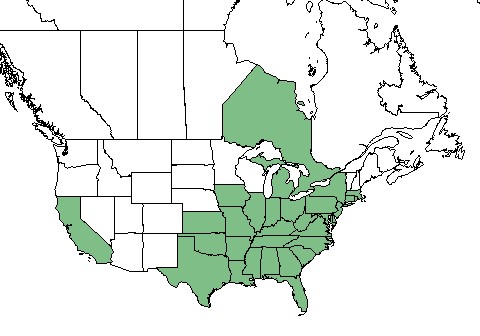Difference between revisions of "Andropogon virginicus"
(→Ecology) |
|||
| Line 34: | Line 34: | ||
===Fire ecology=== <!--Fire tolerance, fire dependence, adaptive fire responses--> | ===Fire ecology=== <!--Fire tolerance, fire dependence, adaptive fire responses--> | ||
| − | ''A. virginicus'' is a pyrophyte that helps create a fire driven system by | + | ''A. virginicus'' is a pyrophyte that helps create a fire driven system by adding fuel to the fire. It maintains extremely high dead:live biomass ratios at 80-90%. Additionally, it can burn at high relative humidity (85-90%) and fuel moisture (20-25%)<ref name="Hughes et al 1991">Hughes F., Vitousek P. M., and Tunison T. (1991). Alien grass invasion and fire in the seasonal submontane zone of Hawai'i. Ecology 72(2):743-747.</ref> |
| − | <!--===Pollination===--> | + | <!--===Pollination===--> |
===Use by animals=== <!--Herbivory, granivory, insect hosting, etc.--> | ===Use by animals=== <!--Herbivory, granivory, insect hosting, etc.--> | ||
Revision as of 13:42, 13 December 2017
| Andropogon virginicus | |
|---|---|

| |
| Photo by the Atlas of Florida Plants Database | |
| Scientific classification | |
| Kingdom: | Plantae |
| Division: | Magnoliophyta - Flowering plants |
| Class: | Liliopsida - Moncots |
| Order: | Cyperales |
| Family: | Poaceae |
| Genus: | Andropogon |
| Species: | A. virginicus |
| Binomial name | |
| Andropogon virginicus L | |

| |
| Natural range of Andropogon virginicus from USDA NRCS Plants Database. | |
Common Name(s): smooth bluestem, deceptive bluestem, old-field broomstraw, broomsedge, sedge grass, sage grass[1], broomsedge bluestem[2]
Contents
Taxonomic Notes
Varieties: A. virginicus var. virginicus; A. virginicus var. decipiens;[1][2] A. virginicus var. 1[1]
Description
Andropogon virginicus is a monoecious perennial graminoid.[2] It reaches 2-5 ft (0.61-1.52 m) in height and bunches together producing clumps (i.e. bunchgrass).[3]
Distribution
Ecology
Habitat
Andropogon virginicus is commonly found in longleaf pine savannas, savannas, flatwoods, maritime wet grasslands, disturbed pinelands, other wetlands, old fields, roadbanks, and disturbed sites.[1] With such a wide range of habitats, A. virginicus has been shown to adapt to ecotones of varying water availability; in granite outcrops A. virginicus is more resistant to water loss than in old field habitat.[4]
Fire ecology
A. virginicus is a pyrophyte that helps create a fire driven system by adding fuel to the fire. It maintains extremely high dead:live biomass ratios at 80-90%. Additionally, it can burn at high relative humidity (85-90%) and fuel moisture (20-25%)[5]
Use by animals
A. virginicus can encompass 2-5% of the diet for large mammals and terrestrial birds as well as occasionally being used as cover for terrestrial birds.[2]
Conservation and Management
A. virginicus is considered a noxious weed in Hawaii where it was introduced[2] and quickly can invade disturbed lands.[3]
Cultivation and restoration
Photo Gallery
References and notes
- ↑ 1.0 1.1 1.2 1.3 Weakley A. S.(2015). Flora of the Southern and Mid-Atlantic States. Chapel Hill, NC: University of North Carolina Herbarium.
- ↑ 2.0 2.1 2.2 2.3 2.4 USDA, NRCS. (2016). The PLANTS Database (http://plants.usda.gov, 30 November 2017). National Plant Data Team, Greensboro, NC 27401-4901 USA.
- ↑ 3.0 3.1 Plant database: Andropogon virginicus. (12 December 2017).Lady Bird Johnson Wildflower Center. URL: https://www.wildflower.org/plants/result.php?id_plant=ANVI2
- ↑ Chapman R. H. and Jones, Jr. S. B. (1975). Ecotypic differentiation in Andropogon virginicus (Gramineae). Bulletin of the Torrey Botanical Club 102(4):166-171.
- ↑ Hughes F., Vitousek P. M., and Tunison T. (1991). Alien grass invasion and fire in the seasonal submontane zone of Hawai'i. Ecology 72(2):743-747.